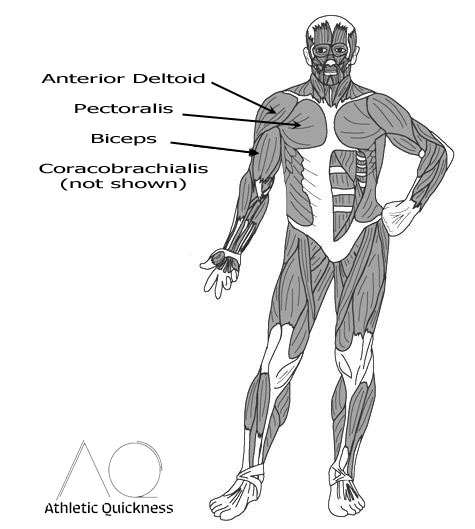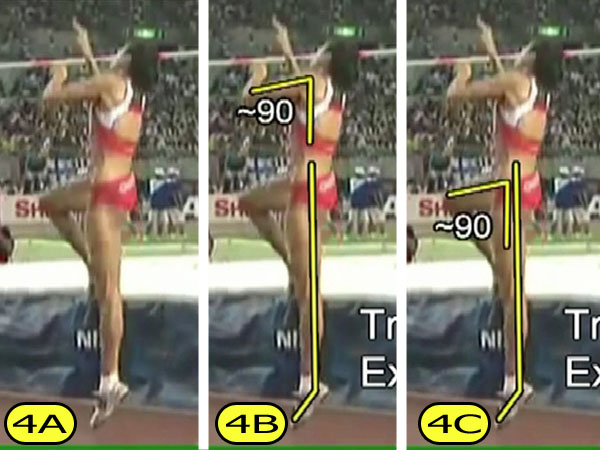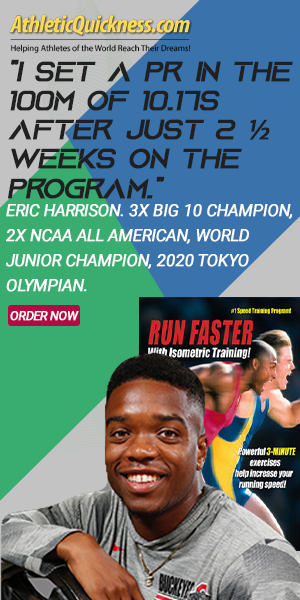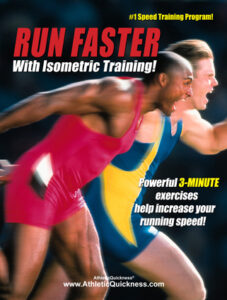Just How Important Are They?
If you knew just how important your shoulder flexor muscles were for speed, then you’d probably invest a lot more time in training them. This is because your shoulder flexor muscles create much needed thrust to go along with the leg pushing off the ground helping you to run your very best.
Meet the Shoulder Flexor Muscles.
The shoulder flexors muscles, also known as the arm flexor muscles, consist of 4 muscles. Their names are 1) anterior deltoid, 2) pectoralis major, 3) biceps brachii and 4) coracobrachialis. See Figure 1 below:

Figure 1. The Shoulder Flexor Muscles.
Function of the Shoulder Flexor Muscles
The main function of the shoulder flexor muscles is to raise your arm up out in front of you similar to how you might raise your hand in class to ask a question. For clarity, the arm is that part of your body from the shoulder joint down to the elbow joint. It is also where your humerus bone is.
Raising the arm in front of you (to some degree) occurs rather naturally when we walk, jog, run or sprint. However, while it may seem natural to do this, it is a necessary motion that was developed over time to help keep your entire body in balance.
When we think of how we, as humans, move about we do so mainly with our two legs and arms. But, each of these extremities is located away from our midline, so, even though they may only appear to provide a horizontal force and vertical one, their displacement away from center will also create a third force component called rotation.
Rotation is Key But, Very Few Know About It
It is the rotational component of all of the extremities working together that allows for beautifully coordinated movements to take place. While you may not fully appreciate this when you’re healthy, you may have experienced poor, or, compromised movement if you have ever injured your arm or shoulder.
For example, maybe you strained your rotator cuff, or, suffered a SLAP tear playing sports? Or, maybe you strained your biceps or hurt your pectorals simply during a workout. If you have, you may not have perceived the effects of your arm injury very much on your walking since the forces in all extremities would be at a minimum.
However, if you ever tried to run with an injured arm, you most certainly would have. This is because running would require a more aggressive arm swing, or, thrust generated by the shoulder flexors. This aggressive arm swing would certainly cause you more pain. As a result, you would be limiting not only any horizontal or vertical forces in your injured arm, but also the necessary rotational one that works with the rest of the body.
So, needless to say, your speed will drop way down simply because you aren’t able to thrust with your arms as much as you used to. On the flip side of this, you should be thinking to yourself that “if an injured shoulder can affect my performance then maybe I should train and strengthen the flexors to increase it”. And I would respond with, “yes, you should”.
Other Ways the Arms Are Used In Sports.
Another area where the arms are used is jumping. While most of the attention is given to the leg pushing off the ground, believe it or not, your arms are also thrusting upward, too. Without the arms thrusting upward at the same time your leg is pushing off, your jumping height won’t be nearly as high. And, you guessed it, weak shoulder flexor muscles could be holding you back from performing at your best.
Below is a sequence of still images from Olympic High Jumper Blanka Vlasic (Croatia) during one of her jumps. I had the pleasure of meeting her back in 2016 when I visited Ireland and my good friend Anthony Star Geoghegan. Blanka is a two time Olympic Medalist and has a personal best of 6′-9 3/4″. The images below are a very good visual of how the arms team up with the legs (yes, both legs!) to help her clear the bar.

Figure 1. Blanka approaches the bar.
In Figure 1, above, notice both of Blanka’s arms are abducted away from her body and slightly extended behind her. This begins their movement in anticipation of thrusting upward at the right time.

Figure 2. Both arms are now drawn directly behind her.
In Figure 2, above, we see both arms drawn directly behind her, this places them in the perfect position. This is because her next move with will be to pull them forward, or flex them in front of her which is a function of the shoulder flexor muscles. With only one direction to move the arms, the shoulder flexor muscles can focus on what they do best and that is raise them up in front of her.

Figure 3. Arms begin to flex forward.
In Figure 3, above, the arms are now beginning to flex forward making it a little more clear as to how they will ultimately be used to help her jump.

Figures 4a, 4b and 4c.
Figures 4a, 4b and 4c above are all of the same frame. Figure 4a shows an advanced position of the arms thrusting upward which again is a function of the shoulder flexor muscles.
Figure 4b highlights the left leg undergoing triple extension which is extension of the ankle joint (ankle plantarflexors), knee joint (quadriceps) and hip joint (glutes and hamstrings). It also highlights the angle the left arm makes with the body which is approximately 90 degrees. This is as high as Blanka will flex her left shoulder.
Figure 4c highlights the right hip and thigh flexed also to about 90 degrees, a function of the hip flexor muscles, which is as high as Blanka will flex it.

Figure 5. One Unified Force.
Figure 5, above, again shows the same frame as Figures 4a, 4b and 4c. This time showing how both arms, through action of the shoulder flexor muscles and the legs work together to create one unified force, vertically.

Figure 6.
In Figure 6, above, we see one last look at how all the forces in the body combine to produce one unified force thereby making Blanka’s perceived body weight less to overcome. This is how the arms work with the rest of the body to make people jump higher.

Figure 6. Blanka clears the bar.
In Figure 6, above, we finally see how the shoulder flexor muscles help Blanka clear the bar during the high jump.
So, if there any aspiring high jumpers as well as sprinters looking to improve your jumping abilities, you may want to start including some shoulder flexor exercises in to your training routine. And, I have included some for you to try.
If you would like to see more about how your shoulders work with the rest of your body when you run, be sure to watch my 12 part series on this fascinating topic of how rotation, or torque is produced in your body. I have titled this series The Ultimate Running Speed Equation and you can watch the videos, here.






